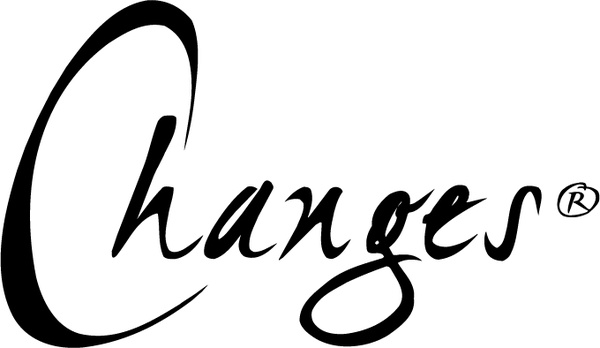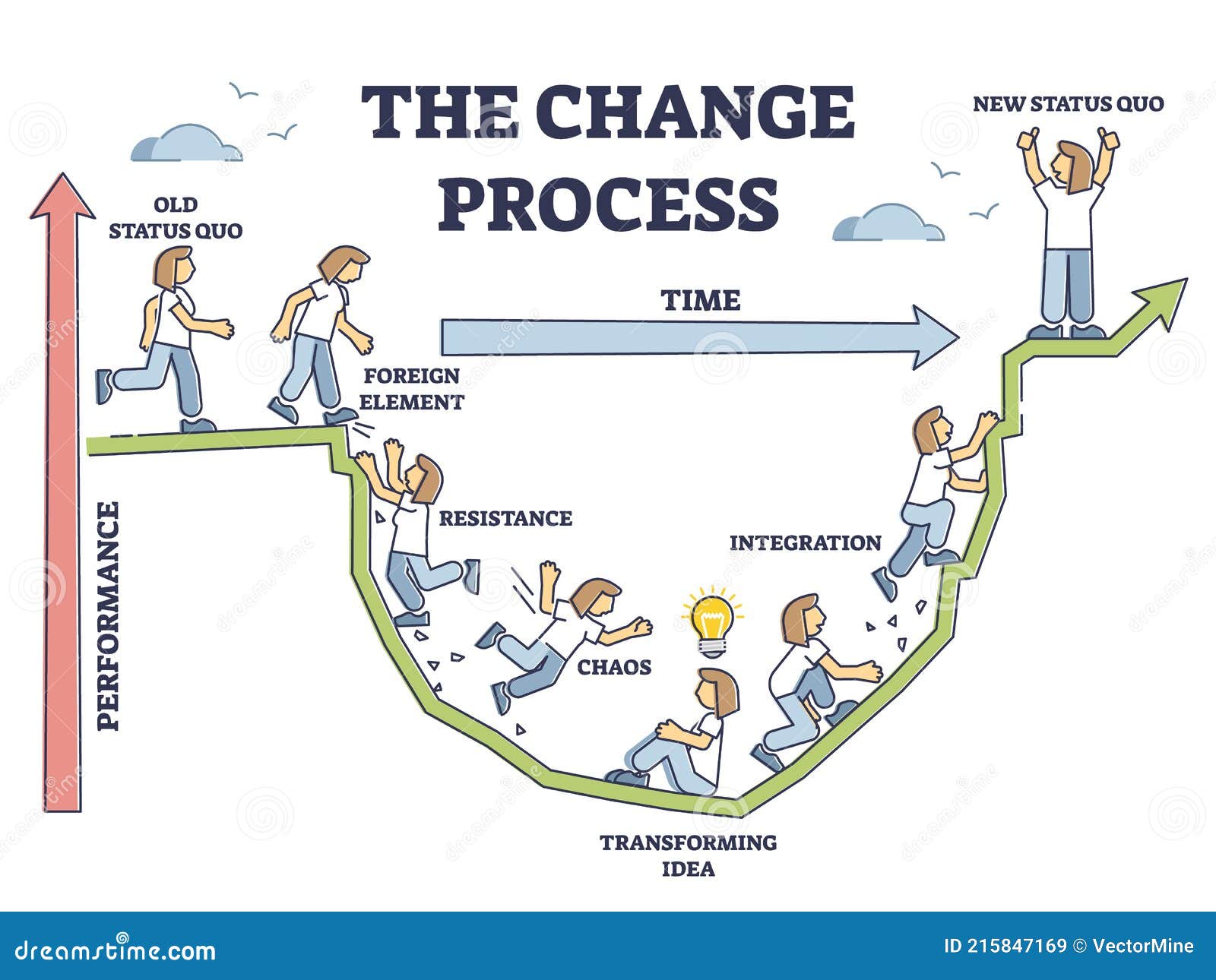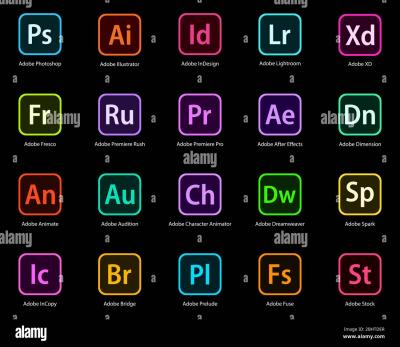In today’s visually-driven world, brand identity is paramount. Vector stock images offer a flexible way to enhance your marketing materials, but they often need customization to align with your brand’s voice and aesthetics. This guide will help you understand the importance of branding and where to find quality free vector stock images that you can modify to suit your needs.
Understanding the Importance of Branding

Branding is not just about a logo; it’s how your audience perceives your business. A consistent and well-defined brand identity fosters recognition, builds trust, and encourages customer loyalty. By editing vector stock images, you can create visuals that resonate with your target audience. Adjusting colors, shapes, and designs ensures that your imagery aligns with your brand’s values and message.
Vector images are particularly useful because they are scalable and can be manipulated without losing quality. This means you can adjust the imagery to fit various applications, from social media graphics to print advertisements. By maintaining a cohesive look across all platforms, you can reinforce your brand identity.
Furthermore, personalized visuals set you apart from competitors who might use the same stock images without modification. Creatively tailoring these images not only demonstrates your brand’s uniqueness but also enhances user engagement, as custom graphics are often more appealing and relatable to potential customers.
Where to Find Free Vector Stock Images

Finding quality free vector stock images is easier than ever. Numerous websites offer an extensive collection of vectors suitable for various industries. Here are some popular sources:
- Freepik: Offers a large selection of vectors, with both free and premium options available.
- Vecteezy: Free vector art and graphics, perfect for personal and commercial use.
- Unsplash: Primarily known for photos but also has a growing selection of vector graphics.
- VectorStock: A repository for vector images, some free, with high-quality selections.
- Pixabay: Provides free images and vector graphics that are safe to use in any project.
Choosing the Right Free Vector for Your Brand

When it comes to selecting a free vector image for your brand, the process can feel overwhelming. With millions of options available, it’s essential to narrow down your choices to ensure that the vector you pick truly represents your brand identity. Here are some key factors to consider:
- Brand Values: Your vector should align with what your brand stands for. If your brand is eco-friendly, look for natural elements like trees or landscapes.
- Color Palette: Choose vectors that complement your brand colors. This helps maintain visual consistency across all your materials. If your brand uses vibrant colors, pick vectors that mirror that energy.
- Style: Consider the artistic style of the vector—whether it’s minimalist, vintage, or playful. This should harmonize with your overall branding strategy.
- Relevance: Ensure that the vector relates directly to your industry, target audience, or products. An illustration of a coffee cup for a coffee shop, for example, makes perfect sense!
- Licensing: Always check the licensing terms. Free doesn’t always mean hassle-free! Ensure you’re allowed to use the vector for commercial purposes, if needed.
Taking the time to choose a vector that aligns with your brand can save you a lot of editing work later. Remember, the right choice enhances your brand identity rather than subduing it.
Essential Editing Tools for Vector Images
Now that you’ve found the perfect vector image, it’s time to edit it to fit your brand seamlessly. Thankfully, there are numerous tools available that cater specifically to vector editing. Here’s a roundup of some of the best tools to consider:
| Tool | Platform | Pros | Cons |
|---|---|---|---|
| Adobe Illustrator | Windows, macOS | Industry standard, robust features, extensive support | Subscription-based, learning curve for beginners |
| Inkscape | Windows, macOS, Linux | Free, open-source, great community support | Can be less intuitive, occasional performance issues |
| Affinity Designer | Windows, macOS | One-time purchase, user-friendly | Not as widely used, so fewer online tutorials |
| Vectr | Web, Windows, macOS | Free, easy to use, works in the browser | Basic features, might lack advanced options |
Each of these tools has its unique strengths and weaknesses, so your choice will depend on your familiarity with editing software and the specific needs of your project. Start with a tool that feels comfortable, and as you grow, you can explore the more complex options that offer advanced features.
Step-by-Step Guide to Editing Vector Images
Editing vector images might sound daunting, but with the right approach, you’ll find it to be an enjoyable and straightforward process! Here’s a simple step-by-step guide to help you get started.
- Choose Your Software: First, you need to select a vector editing software. Popular options include Adobe Illustrator, Inkscape (which is free), and CorelDRAW. Each has its own set of tools, but the basic functionality is similar.
- Import Your Vector Image: Open your software and import the vector image you want to edit. Most programs allow you to drag and drop your file directly onto the workspace, which is a handy shortcut!
- Understand the Layers: Familiarize yourself with the layers panel. Vectors are typically made up of multiple layers, and understanding how to navigate these will enable you to edit individual elements easily.
- Select Elements to Edit: Click on the specific parts of the image you want to alter. You can select shapes, lines, and text. Don’t hesitate to use the direct selection tool to precisely adjust paths and points.
- Make Your Edits: Here comes the fun part! You can resize, rotate, or move elements around. If you want to change colors or add effects, look for the color fill options and launch your creativity!
- Save Your Work: Always save as you go to avoid losing any progress. Use the appropriate file format for your final design—SVG is great for web use while PDF serves well for print.
- Export for Use: Once satisfied with your edits, export the file in the format needed for your application—whether that’s a JPG, PNG, or another format.
By following these steps, you’ll be well on your way to customizing vector images that perfectly align with your brand’s vision!
Customizing Colors and Textures to Match Your Brand
Colors and textures play a crucial role in establishing your brand identity. Harmonizing vector images with your brand palette not only enhances visual appeal but also reinforces brand recognition. Here’s how you can customize both effectively:
Customizing Colors
To adjust colors in your vector images, follow these tips:
- Identify Your Brand Colors: Know your brand’s primary and secondary colors. Use tools like Adobe Color or Coolors.co to build a harmonious palette.
- Replace Existing Colors: Select the shapes or elements you’d like to change and use the color picker tool to apply your brand’s colors. This can often be done in bulk through the software’s find-and-replace color feature.
- Experiment with Gradients: Adding gradients can give depth and dimension to your design. Adjust the angle and opacity to create something unique that reflects your brand’s personality.
Enhancing Textures
Textures can add a layer of sophistication to your designs. Consider these options:
- Using Texture Overlays: Import texture patterns (like paper, fabric, or wood). Overlay them on your image and adjust the transparency to maintain the visibility of your vector artwork.
- Create Custom Textures: For a personal touch, create textures using tools like Photoshop or Procreate, then incorporate them into your vectors.
- Utilize Vector Textures: Many vector graphic packs offer built-in textures. You can find countless options online that are easy to incorporate into your designs.
By thoughtfully customizing colors and textures, you ensure that your vector images not only reflect your brand’s identity but also resonate with your audience. Happy editing!
Saving and Exporting Your Edited Vector Images
Once you’ve put in the effort to edit your vector stock images, the last step is saving and exporting your work. This sounds simple, but it’s crucial to do it correctly to ensure your images look their best and align perfectly with your brand. Here’s how to navigate this final phase:
1. Choose the Right File Format: Depending on how you plan to use your vector images, you’ll want to choose an appropriate file format. Here are some common formats:
- SVG: Great for web use, retains quality at any size.
- AI: Adobe Illustrator format, best for further editing.
- PDF: Ideal for print, maintaining a high quality and compatibility.
- EPS: Also for print, useful for high-quality graphics.
2. Check Image Resolution: Make sure your edited images have the right resolution for your intended use. For digital displays, a resolution of 72 DPI is typically sufficient, while print materials may require at least 300 DPI.
3. Optimize for Web: If you’re using your images online, consider optimizing them for faster loading times without losing quality. Tools like TinyPNG can help with this.
4. Organize Your Files: Save your edited images in a well-structured folder hierarchy. Use clear naming conventions that include the date and project name, so you can easily find what you need later.
By following these steps, you can ensure that your edited vector images are saved and exported in a way that enhances your brand’s visual presence and maintains the quality of your design work.
Tips for Consistency in Brand Identity
Creating a strong brand identity isn’t just about picking the right colors or fonts; it’s also about maintaining consistency across all your visuals, including vector images. Here are some key tips to help you achieve that:
- Develop a Brand Style Guide: Document your brand colors, typography, logo usage, and imagery style. This guide will serve as a reference point for anyone creating visuals for your brand.
- Use a Color Palette: Stick to a set of colors that represent your brand. This helps ensure that all vector images feel cohesive. Use tools like Adobe Color to create and save your palette.
- Maintain Font Consistency: Choose a couple of fonts that reflect your brand’s personality and use them consistently across all platforms and materials.
- Image Style: Choose images that harmonize with each other. For instance, if your brand is playful, opt for whimsical illustrations instead of serious graphics.
- Regular Review: Periodically audit your existing visuals to ensure they align with your evolving brand identity and make adjustments as needed.
Remember, consistency is key! When you keep your visuals aligned with your brand identity, you build recognition and trust, making your brand memorable to your audience.
Best Practices for Using Edited Vectors in Marketing
Edited vector stock images can be a fantastic asset for your marketing materials, but to maximize their effectiveness, it’s essential to follow some best practices. Here’s a guide to ensure your vectors shine while aligning with your brand identity:
- Maintain Consistency: Ensure that the colors, styles, and themes of your edited vectors align with your brand’s overall aesthetic. This builds recognition and trust among your audience.
- Use High-Resolution Files: Always opt for high-quality vectors. Even though vectors can be resized without losing quality, starting with a clear, high-resolution file will ensure every image looks polished.
- Limit Changes: While it’s tempting to make drastic edits, remember that subtle adjustments often yield the best results. Over-editing can detract from the original artwork and make it appear unprofessional.
- Appropriate Usage: Use vectors where they make sense. For example, icons for web design, illustrations for social media posts, or backgrounds for presentations. The context is key to effective communication.
- Test Variations: Don’t hesitate to try different versions of your vectors. A/B testing can give you insights into which styles resonate more with your audience.
By following these best practices, you can harness the power of edited vector stock images to create visually compelling marketing materials that resonate with your brand ethos and audience.
Conclusion and Next Steps for Your Brand
As we wrap up our discussion on editing free vector stock images, it’s clear that these resources can be a game-changer for your brand’s marketing strategy. Here’s a quick recap of steps you should consider moving forward:
- Assess Your Needs: Determine how vector images can best serve your marketing objectives. Are you focusing on social media, website updates, or print materials?
- Research Resources: Spend some time exploring platforms that offer free vector images. Websites like Freepik, Vecteezy, and Unsplash are great starting points!
- Practice Your Editing Skills: Familiarize yourself with editing tools like Adobe Illustrator or even online editors like Canva and Figma.
- Implement Gradually: Introduce edited vectors into your marketing strategy gradually. Start with one campaign and analyze the response before rolling out broader changes.
By taking these steps, you can effectively integrate edited vector images into your branding efforts, enhancing your visual storytelling and ultimately engaging your audience more deeply. Remember, the journey is ongoing—stay creative and keep experimenting!

